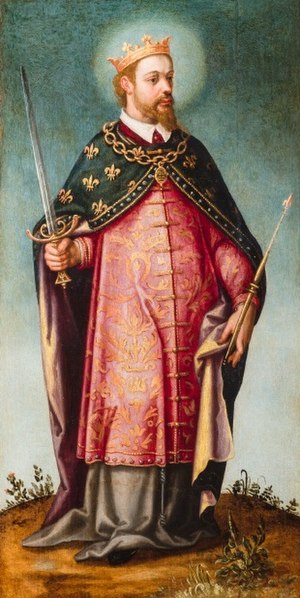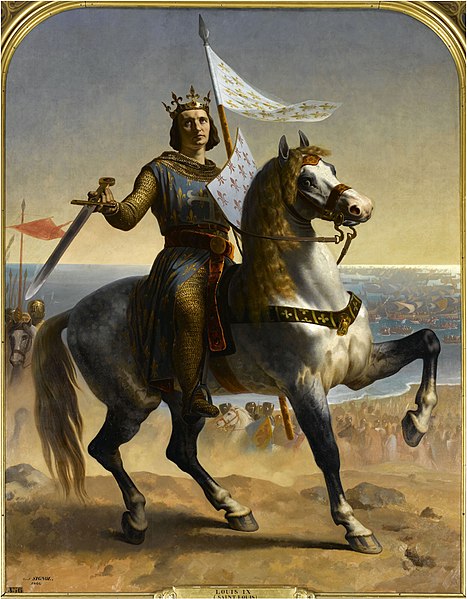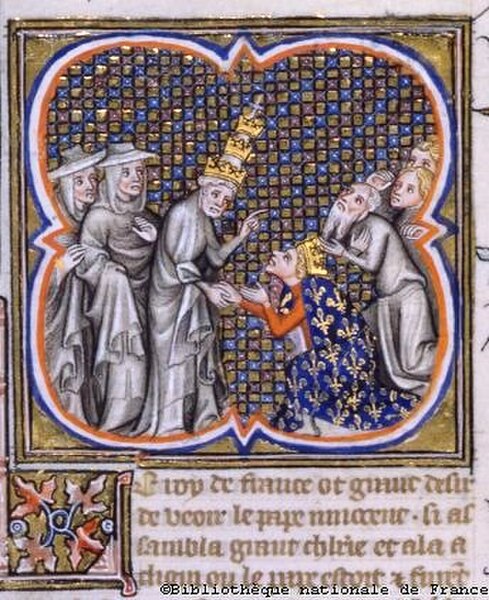Grandes Chroniques de France
The Grandes Chroniques de France is a vernacular royal compilation of the history of the Kingdom of France, most manuscripts of which are luxury copies that are heavily illuminated. Copies were produced between the thirteenth and fifteenth centuries, the text being extended at intervals to cover recent events. It was first compiled in the reign of Saint Louis, who wished to preserve the history of the Franks, from the coming of the Trojans to his own time, in an official chronography whose dissemination was tightly controlled. It was continued under his successors until completed in 1461. It covers the Merovingian, Carolingian, and Capetian dynasties of French kings, with illustrations depicting personages and events from virtually all their reigns.

Philip the Good, Duke of Burgundy, with Chancellor Nicolas Rolin and the future Charles the Bold, accepts his copy of the Grandes Chroniques de France from Guillaume Fillastre on 1 January 1457. As often this presentation miniature is in the book itself, which is now in St Petersburg. This book contains the Burgundian version for later periods.
Clovis I of the Franks, Clotilde and his sons, 14th-century
Philip II of France captures Tours in 1189. Jean Fouquet
Louis IX, commonly revered as Saint Louis, was King of France from 1226 until his death in 1270. He is widely recognized as the most distinguished of the Direct Capetians. Following the death of his father, Louis VIII, he was crowned in Reims at the age of 12. His mother, Blanche of Castile, effectively ruled the kingdom as regent until he came of age and continued to serve as his trusted adviser until her death. During his formative years, Blanche successfully confronted rebellious vassals and championed the Capetian cause in the Albigensian Crusade, which had been ongoing for the past two decades.
Contemporary depiction from the Bible of St Louis, c. 1230
San Luis, Rey de Francia (English: Saint Louis, King of France) by Francisco Pacheco
Painting of Louis IX by Emile Signol
Pope Innocent IV with Louis IX at Cluny







